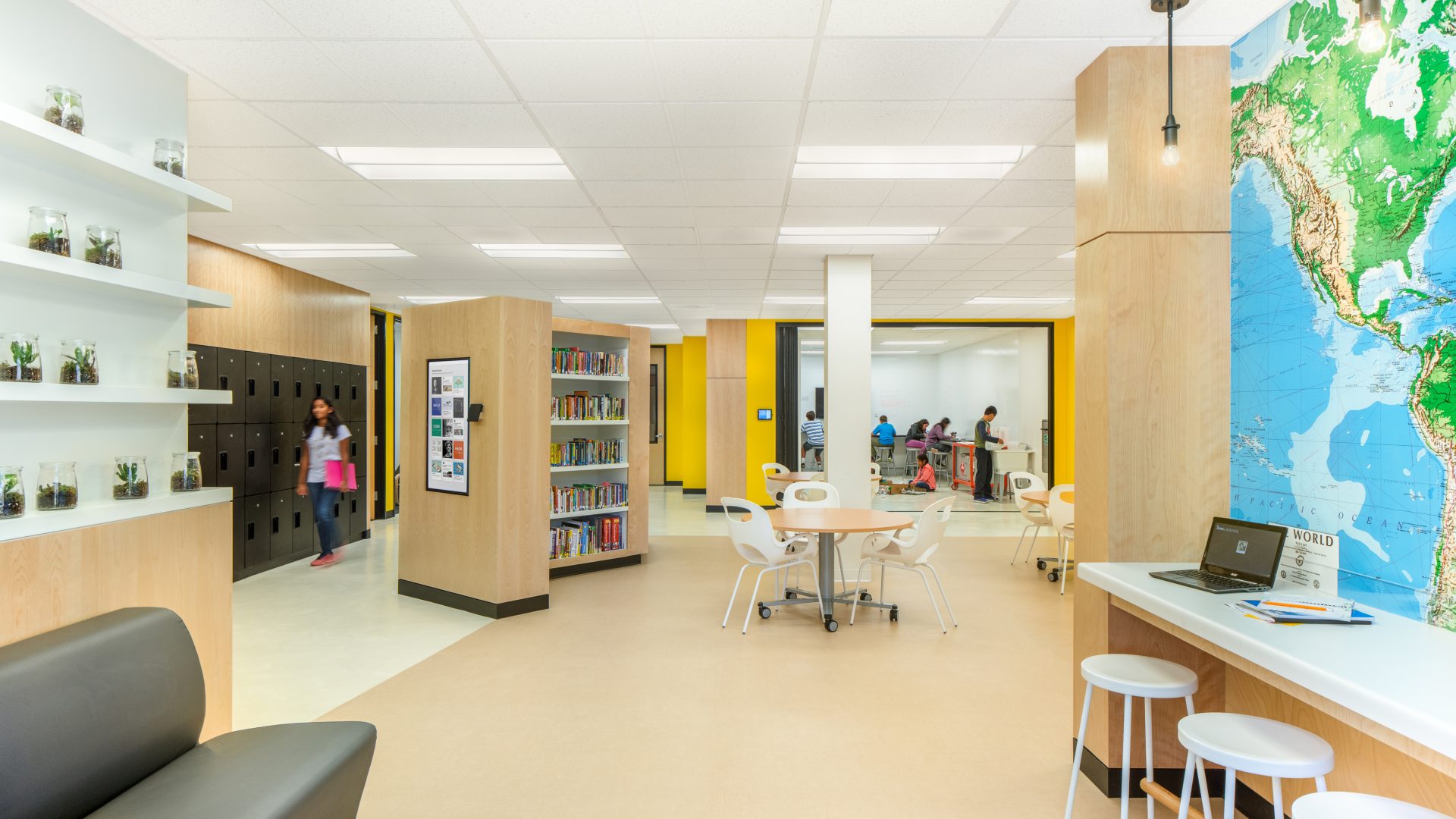- The Khan Lab School replaced classrooms with a mix of micro-environments.
- These spaces are designed around different learning modalities, and aren’t tied to specific subjects.
- This gives the school flexibility to continuously update its curriculum.
There are no classrooms at Khan Lab School—at least, not the way you’re probably imagining.
Instead, the school contains a handful “micro-environments”—designated zones and spaces for students and teachers to interact and work in a particular way. While schools typically organize rooms by subject, Khan Lab School (KLS) sorts based on modality: discussing, debating, researching, designing, making, and presenting.
And it’s making all the difference.

A partnership between Kurani and Khan Academy, in Mountain View, California, Khan Lab School starts from a place of experimentation and adaptability. The campus is a laboratory for testing new ways of teaching and learning. As education evolves, so will the school’s design.
“Given how frequently schools change curriculum and personnel, this classroom model makes sense for the future of education,” Danish Kurani, the founder of Kurani, told EducationWeek. “For now, all we can bet on is that students will continue learning through dialogue, brainstorming, making, presenting.”

These ways of learning are as old as learning itself. Humans have always processed new information through hands-on activities, making and doing, and just getting our hands dirty.
“Overall, the advantage of the learning space design is twofold,” said KLS math specialist Dustin Pierce. “One, the space provides several different options for how it can be used. Two, transitional and open workspaces align with 21st-century workplace norms.”

If educators really want to embrace the future of learning, Khan Lab School is proof they can stop searching for a cookie-cutter “school of the future.” The future is, and will always be, flexible.
Do you want micro-environments for learning? Contact us and let’s talk about creating them for you.






